Over the holidays, I had the pleasure of reading Canada’s #truepatriotlove poster boy, Mike Myers. His memoir, Canada, is the former SNL funnyman’s unabashed love letter to Canada and his critical take on what traits define our country. A “bastion of progressive ideals”, “a country where I am my brother’s keeper”, the “heartland of civility” … the ex-pat’s blood runs as red as his roots run deep.
They’re all pretty heady statements that run the risk of making us a smug lot, although most of my US friends would acknowledge Canada has earned it’s air of superiority with America’s current maelstrom of fire and fury.
Still, Myers is able to offer his take on Canadiana from a multi-nation perch. He’s spent half his life working and living in the US, so his civility radar is pretty finely tuned. It’s not about how well we agree but how well we disagree, Myers likes to say.
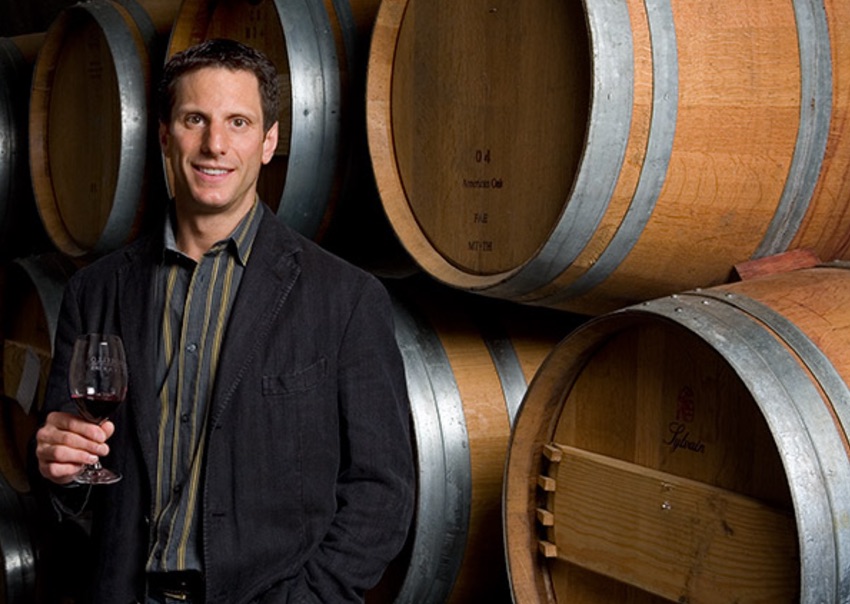
At the recent Wine Bloggers Conference in Santa Rosa, I was fascinated to discover a flock of Canadians who have pulled up roots and migrated south to live the great California wine dream. One of those Canadians with a stake in both countries is Ray Signorello Jr., owner of Signorello Estates in Napa.

If anyone has earned the right to abandon his Canadian civility, it’s this guy. In October 2017, Signorello Estates became the face of the Napa Valley fires that raged though the Napa and Sonoma wine heartland. The images of unimaginable devastation and loss seen all over the media, featured Signorello’s incinerated winery.

With glorious hillside vineyards nestled into the western facing sweep of the Atlas Peak hills, Signorello Estates had done a lot of fire prevention things right. He had minimal brush and only a few trees around the perimeter of the property. “I’ve got vineyards pretty well all around me except for that one side and that’s the side where the fires came though,” says Signorello. Despite desperate efforts by his winemaker, Pierre Birebent, and the harvest team to water down the property and stop the onslaught of flames (Ray was in Canada), Signorello’s Silverado Trail home and winery burned to the ground. Few wineries in Napa sustained the damage that Ray and his family did.
Enlightenment is to travel lightly, says the eminently quotable Mr Myers, and I found Ray Signorello beyond charitable in his outlook. It could have been worse, no one died, everyone was safe, he says reassuringly, as I share my condolences with him. His glass-half-full optimism makes him one of those stalwarts Canadians love to claim as their own.
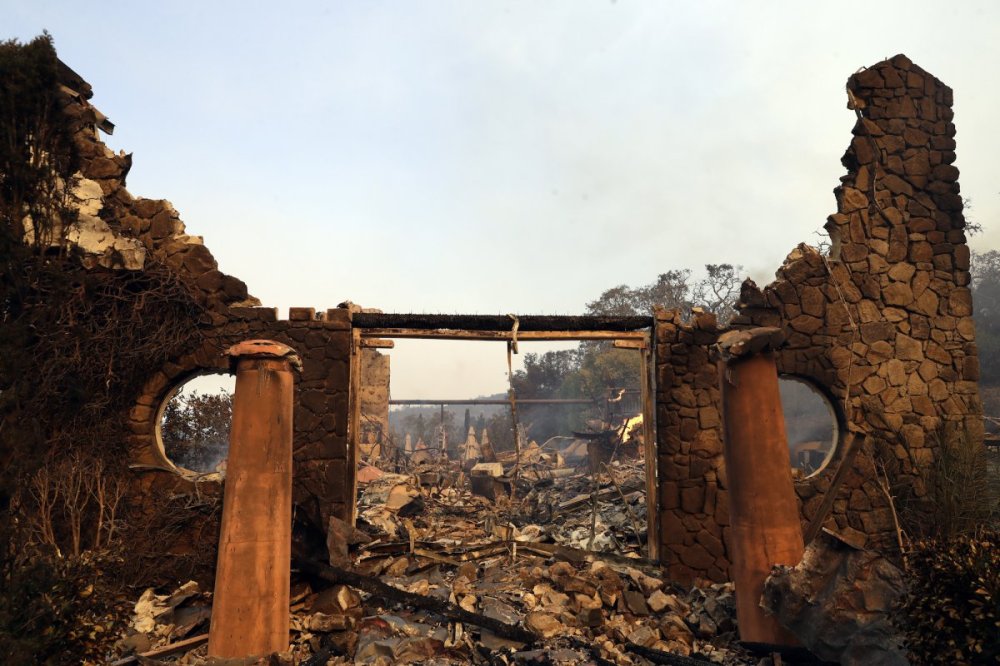
Three months after the fact, Ray Signorello is able to wrap perspective around the fires, the loss of the winery and share the road ahead for Signorello Estates. I also asked him to park his civility and reflect on the wine industry writ large and specifically the business models and interprovincial laws that govern wine distribution in Canada. Like Mike Myers, dual Canadian/American citizenship gives him a pretty interesting vantage point. Spoiler alert: his thoughts on the role of government in the Canadian wine trade isn’t all maple syrup!
Ray says I should meet some of his Napa neighbours who are also Canadian, so I see a Canadian Winemakers at Large series in my future. In the meantime, here’s one of Canada’s finest who gets the Mike Myers stamp of approval (in my humble opinion). Note: Ray had so much wine wisdom to share, you’re getting the magnum version of our conversation.
Q&A
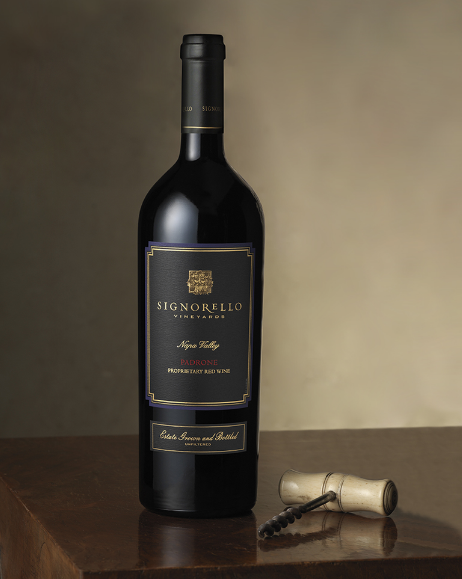
What Canadiana attributes or traits have you exported to Napa?
Interesting question. I was actually born in California but my father was in the mining business so we moved to Vancouver when I was two, so I definitely grew up Canadian. My father and mother are both American and my grandparents are Italian. They came to the US in 1904. I went through school – elementary, high school, UBC – in Vancouver. I studied business. I didn’t go to biz school for California – I went to biz school to work on Wall Street but ended up in the wine industry through some happenstance. I fell in love with the industry and I’m now in my thirtieth year. So I was there – in California – from the 1980’s until 2004 and then I decided to switch things up again and put my home base operations in Vancouver. I started a wine agency and distributorship in Western Canada to give me something else to anchor me in Vancouver.
We distribute my wines and other wines from around the world in BC, Alberta, Saskatchewan and Manitoba. It gives me a world perspective because not only am I representing my wines, but I’m representing wines from a variety of countries. So that’s one part. And then I have Signorello Estates and three other wine businesses in Napa – Fuse, Edge and Trim (California) wines – different wine brands, areas, vineyards, price points.
So you have dual citizenship and a two-country perspective…
Yea, and back to your original question…. I guess I look at it two ways. I look at it as what do I bring to Canada and what do I bring to the US? They’re countries beside each other but they have different philosophies on business in general. The difficulty in Canada is it’s a highly socialistic wine business. The government is involved in every province but Alberta. In the US there’s no direct government involvement. Pennsylvania is the one state that has some similarity to Canada but the rest of the US is a wide open market.
So I see both sides of that. A lot of people say why don’t you make wine in the Okanagan? I have a real focus on what I do in Napa Valley and the Okanagan is a really different animal. I don’t think I could do two things that well. They’re just too far apart. A lot of people look at me as a Canadian based person – but I play both sides of it. I see the business from both sides of the border. With my own business its difficult because I own wineries in Napa Valley, but I can’t even give my wine away and donate it to charities in Canada, which is kind of weird.
….because of current laws?
Yes. We’re paying way too much tax in Canada for wine – it’s crazy – and there’s no way around it. Let’s say you’re in the trade and I sit down with you to show you my wine. I actually have to buy my wines and pay the 100 and some odd percent tax to give it to you. That’s anti-business – it doesn’t make any sense. That’s the problem I have running a winery in Napa and trying to push my agenda in Canada as opposed to you’re more localized – you’re a Canadian winery – you don’t have that impediment so it works against me having a US winery in Canada, whereas if I have a Canadian winery in Canada it would be much easier to operate. I wish we could drop the barriers to that and the US (and Australia governments) are taking Canada to court over protectionism.
In the US after prohibition, they gave each state the right to manage their own liquor destiny and that’s been pounded away for the last 20 – 30 years so that inter-state shipping is so normal in the U.S. We can ship wines from California to wherever. Whereas in Canada, you buy wines in BC and you can’t ship it to yourself ….anywhere. So is that a good thing? I look at it as not a good thing and I think that’s why the federal court case is happening. The sense it makes is each province wants to tax everything. That comes down to a socialistic aspect and that needs to be beaten back. If consumers do eventually get the ability to ship wine to themselves across provincial lines – that’s great for them, but then for me – as an American winery – I should get to do that too, shouldn’t I? Otherwise the NAFTA agreement comes into affect.
I have two passports, so I see it all with dual country businesses and as a dual citizen. It gives me a real clear vision of what works and what doesn’t work and where we’re going. I’m proud of the Canadian wine market and Canadians are well liked and well received in the US, but I think its interesting to see how the Canadian and US businesses operate. The US went through what Canada is dealing with now. I just don’t see how you can stand in the way of that – y’know?
What’s your AVA?
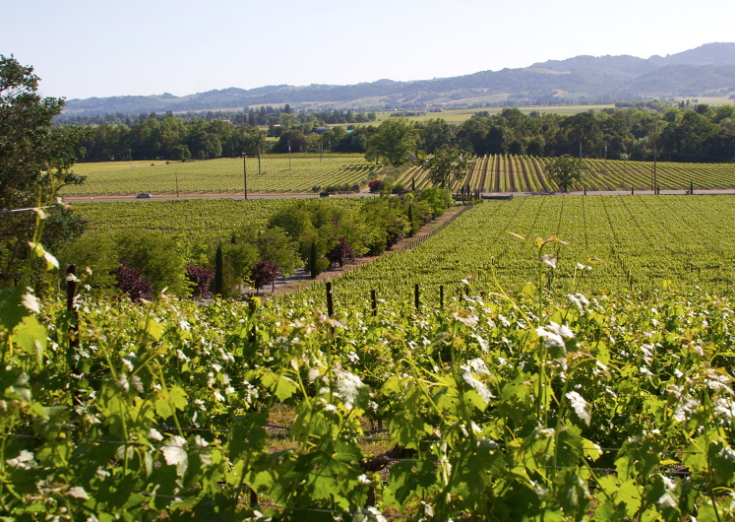
We’re in an interesting situation. We use the French term “monopole” to describe our property. I own a piece of land that’s on a whole hillside and there’s no other property around me that has the same dirt. Just north is Stags Leap and just west is Oak Knoll but I don’t have anything in common with Oak Knoll – and nothing much in common with Stags Leap. They have clay loam soil while mine’s rocky. So there’s no AVA that makes sense for me because it would be too small and you can’t have your own AVA – that’s not the reason they have them. The other part of it is we’re in a cooler part of Napa Valley, so we would share that attribute with Stags Leap and Oak Knoll, but we don’t share the soil type at all.
Can you tell me about your winery?
We’re an estate winery. We’re one of the few, true estate wineries – and even rarer than that – a contiguous estate. The winery and the vineyard are all together which in Napa Valley is almost non-existent – even the famous wineries that you think are – aren’t – so it’s very much like a Bordeaux model chateau. The winery sits in the middle of the vineyard, which is where we have it – and everything is farmed in-house and has been for the last 40 years. It’s pretty unique in that respect – and the vines are 38 years old now. We have some of the oldest Chardonnay vines in Napa and our Cabernet vines are quite old by cab standards. That’s what makes us what we are. It’s the estate, the dirt, that’s my driving force. I’m trying to get Napa Valley to that stage – it’s how I talk to people – our consumers – the media. We talk about the dirt. My kids will hopefully take this over one day– Pierre, our winemaker – and I will be gone. But the dirt will live on and that’s really the go-forward for the quality of what we do here.
But isn’t everyone talking the dirt or terroir story to help differentiate their brand?
In the new world of North America we tend not to go down that road too much. People here get excited about celebrity winemaking and chefs – it’s that whole sizzle thing – but that’s not me. I’m really more old school. I’ve gone to Europe a lot and they don’t have big tasting rooms. We don’t have one either – well today, we don’t have anything – we have rubble, (laughing) but when we come back in 2 – 3 years we’ll have a great sit-down experience. When you go to Italy and France – it’s always the interplay between the food and the wine. We were one of the early pioneers of that in Napa – I got my commercial kitchen in 2003. It was us, Beringer and Mondavi – the big guys. But me going to Europe – I thought …this is the right way to do it for what we’re trying to do. We’re trying to make wine that’s way more Euro – we’re not making jammy, ripe, fruit bomb, flashy stuff. We’re making real, traditional, age-worthy, estate-bottled, unfiltered, unadulterated Cabernet.
So “way more Euro” is your inspiration?
That, and we’re in one of the cooler parts of Napa – old vines, cooler and rocky gives you a different feel – than some of the other areas. We’re 5 degrees cooler than even in St Helena. Five degrees gives you a different flavor and ripeness profile – and the winemaker has decisions to make in this. Some wineries push and make very ripe wines – there’s 700 wineries in Napa and there’s a bunch that go down that road. There’s not as many that go down the road I’m trying to go down. Again – I use that term Euro – if you looked at my personal preferences and looked at my cellar – I drink what I’m trying to make. I love Italian – Barolo, Barbaresco – those aren’t flashy cocktail hour wines. They’re wines that need some age to go with food. That’s more inspiring for me.
Let’s face it. Some of the most popular wine in the U.S. right now are ripe, jammy and sweet and I’m talking real sweet with residual sugar. Those are the wines that commercially, are very popular and viable. Remember, the number one drink in the world is Coca Cola – full of sugar. Sugar is probably the number one drug in the world and people love sugar. The wine business knows that and the wine business has seen that jammy is a good way to make a lot of money. There’s a lot of wine being made to please that palate and that’s where the big money is – the large dollar plays tend to follow that style and playlist. But that’s not us.
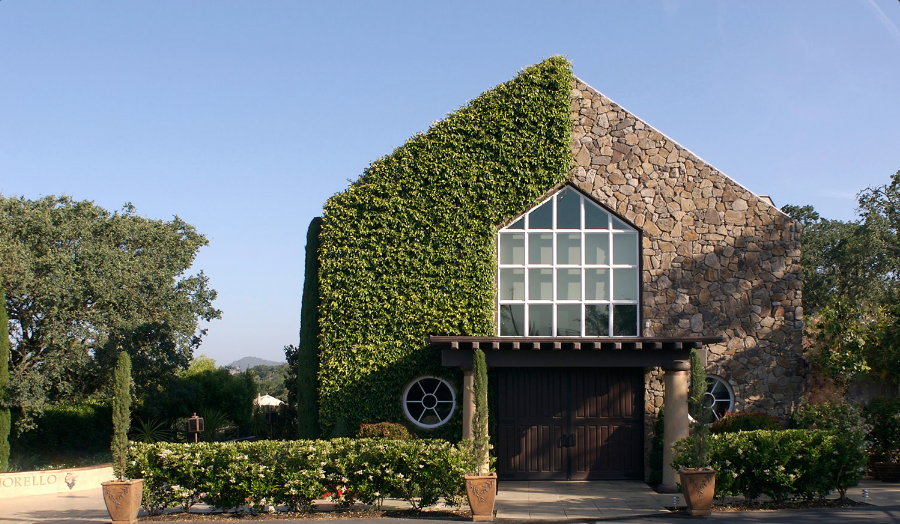
The fires obviously devastated you personally and the Napa and Sonoma wine community. How do you and your valley neighbours mitigate the risk factors associated with climate change going forward? Is there a climate change plan for Napa vintners?
Everyone here is talking about that. I don’t know if there’s a “plan”. I’m rebuilding – talking to my architects and engineers about how we can protect ourselves better. We’ve figured out vineyards are naturally, pretty good firebreaks – I’ve got vineyards pretty well all around me except for that one side where the fires came through.
Vineyards don’t burn very well – if you’ve got cover-crops, that’s a problem. Clean tilling under the vines is a good deterrent to not having your vines burn up. On the property, having a clean area – not having stuff around the perimeter. By that, I mean stuff that can burn, like trees and bushes and what you build the buildings out of. We’re looking at concrete and steel. It’s not perfectly fire resistant but better than wood. We’re also looking at perimeter sprinklers – exterior sprinkler systems -I’ve got a fair amount of water on my property so we’re looking at putting a water canon on the main structure’s roof that the fire department can plug into.
We’re not going to change the climate – fires will come back. I’ve had fires before, but can we mitigate? This happened to be the perfect storm for fires – that day it was 10% humidity and the winds were 50 mph – so it was a red flag warning day. We rarely see those types of days but we did on that day, so that, coupled with the fact that it happened in October when everything is already dry, coupled with the fact that we had the wettest spring in history which meant we had a lot of green growth. So a lot of growth in the spring turned into a lot of dry stuff in October. The wind happened in October – humidity was super low that day, and it all just basically exploded.
That, plus the power poles went down – they couldn’t withstand the wind. The trees blew into the power lines – sparked – and started fires. And this wasn’t just in our area – it happened in six other areas at the same time. I think PG&E (Pacific Gas and Electric Company) is looking at how they can protect their power grid so their power grid doesn’t start fires. A lot of people are blaming PG&E saying they knew this was a risk – I’m not saying that, but others are – and they didn’t do anything about it. PG&E can help themselves by making their systems more robust.
So yeah, I think everyone’s talking about it. You do your own part to mitigate the risk. As we build more things – more housing, you encroach and you create the problem. 500 years ago fires happened and burned everything out and the land was cleansed and people started over.
And now you’ll start over too…
Yes, but – keep in mind – certain wineries aren’t exposed to this. It’s a non-event on the valley floor. When you’re up on the hillsides, there’s more of a problem because you have a lot of grass and trees, and winds whistle though and the power lines run through there. You also build your facilities as best you can to manage an earthquake. I’m going to be building for that as well – for barrel storage and tank storage – how high you go with barrels… We’re also adding caves. They’re one of the safest places to be in an earthquake. They’re like a tube in the rock – they’re naturally very strong. The caves we’re building will stack barrels one or two high, whereas in buildings you can stack them very high. And that’s the problem they had during the last earthquake (August 24, 2014) in Napa. Barrels and high racks come tumbling down. Caves are also fire resistant. They don’t burn– and they’re naturally cooling so they’re good for the environment. You don’t use power to cool and humidify.
Not only is the climate changing – the wine business is changing too. Critics are playing an increasing role in promoting and bringing wines to the public…Robert Parker is a big fan. Do regular 97 point scores from Robert Parker make the bar going forward unreasonably high?
Ratings make it easy to sell wine (laughing).
Even if scores go down?
Well, we try to make better wine each year. Our vines are getting older – and as they age they get better. Our abilities…the wine we were making 20 years ago was good, but not nearly as good as today and we’re not the only ones. Everyone is making better wine today.
The bigger question for me, is the impact of critics. It’s changed dramatically. Back in the 50’s, 60’s and 70’s – critics didn’t have much play. Robert Parker revolutionized the play and impact of critics. He’s really changed the industry that way. He was so powerful – there’s never been any one that powerful before him or since him. I think it’s a once-in-forever phenomenon. He was there at the right time, with the right stuff and the right 100 point score that had never really been used before. In the 60’s wine was wine, but in the 80’s wine became universally trendy.
It’s a much bigger deal now. That wave of press really changed the wine industry. Giving wine big scores created the cult phenomenon and wines that command big dollars. Not necessarily focused on all the wine regions of the world but on some like Napa, Sonoma, Rhone, Bordeaux – although it was already pretty famous but Parker added another level to it.
But it’s different now – the social media aspect, so many more people are wine critics. There are so many different avenues for getting wine information…. from blogging, all the different publications, to wine-aware consumers who talk about their experience on apps like Vivino and Delectable – with Antonio Galloni. Apps are huge players, now, with amazing reach and influence. It’s changed the way business is being done.
How are you engaging the next generation of wine drinkers? I try to stay away from the moniker “millennials” because it covers such a vast age group….
Yea, it’s true and it’s always a big topic of discussion for us. The business model has changed so much and sommeliers are so much more of a force in the popularity of wines. They tend to be the gatekeepers for the restaurant world and we’re trying to understand that changing world. We now have a somm on staff – we hired him about two years ago and he came out of San Francisco restaurants so has great experience there, so we try to look at all the avenues. We try to engage critics, we use social media, we reach out to somms.
Do we have a good solution to that? I don’t know but…I’m always thinking about it.
I read the articles, read the stories, read it all. And it’s a different animal. They’re different from Gen X and Baby Boomers. They seem to be more interested in trying wines they haven’t heard of before – off-beat stuff – not necessarily the blue chip Napa Valley. So the challenge is how do we in Napa Valley make sure we’re engaging them. Some wineries here are doing tastings to specifically attract millennials as their target audience – holding tastings at trendy restaurants in San Francisco. I just read an interesting article in Vogue about a winery here that’s offering a lecture series, which is really interesting. They’re not necessarily Napa Valley consumers now but we’re following their journey.
Thank you Ray Signorello for your fabulous insight and we’ll watch – with great anticipation – your wine journey ahead!! Let’s see if we can’t get Mr Myers onboard for a glass of Signorello’s finest.
Feature Photo: Driveway to Signorello Estates. (Photo credit: Signorello Estates)

GREAT article. You need to correct the misspelling of Signorello’s name in your title though ….
LikeLike
Thanks for the catch! Appreciate it.
LikeLike
Ray’s insight felt like I was standing there listening to him. My wife and I feel his wines are one of the best. We visit every year for the food and wine pairing luncheon. The winemakers wife Natalie hosts the pairings. The staffs enthusiasm for their brand is second to none. We joined their wine club a bunch of years ago because of their wines, their staff, their food pairing lunches, the views. Sounds like a commercial, but it really is one of the best places to visit. Cheers and waiting for the comeback.
LikeLike
Definitely one of the good ones. Thanks for sharing.
LikeLike